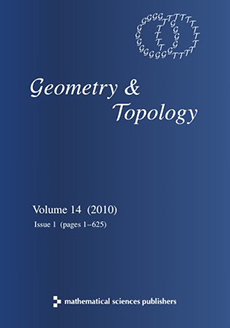Abstract
A classical –symbol is a real number which can be associated to a labelling of the six edges of a tetrahedron by irreducible representations of . This abstract association is traditionally used simply to express the symmetry of the –symbol, which is a purely algebraic object; however, it has a deeper geometric significance. Ponzano and Regge, expanding on work of Wigner, gave a striking (but unproved) asymptotic formula relating the value of the –symbol, when the dimensions of the representations are large, to the volume of an honest Euclidean tetrahedron whose edge lengths are these dimensions. The goal of this paper is to prove and explain this formula by using geometric quantization. A surprising spin-off is that a generic Euclidean tetrahedron gives rise to a family of twelve scissors-congruent but non-congruent tetrahedra.
Citation
Justin Roberts. "Classical 6j-symbols and the tetrahedron." Geom. Topol. 3 (1) 21 - 66, 1999. https://doi.org/10.2140/gt.1999.3.21
Information





